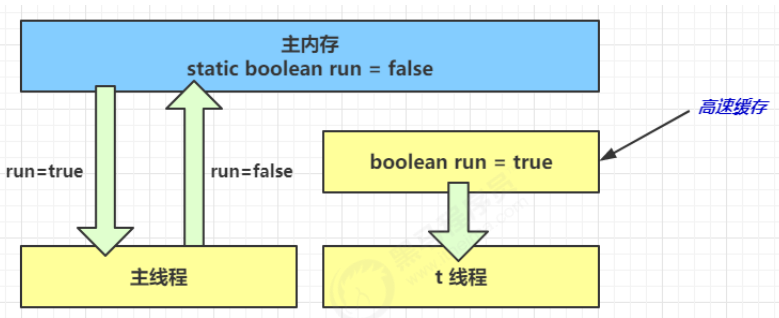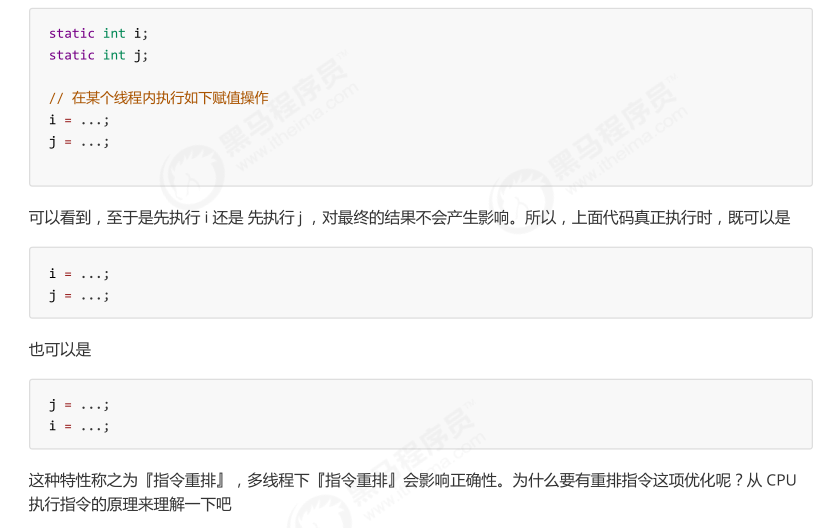并发编程笔记2
交替输出事例
@Slf4j
public class Demo02 {
public static void main(String[] args) {
Await await = new Await(5);
Condition a = await.newCondition();
Condition b = await.newCondition();
Condition c = await.newCondition();
new Thread(()->{
await.print("a",a,b);
},"t1").start();
new Thread(()->{
await.print("b",b,c);
},"t2").start();
new Thread(()->{
await.print("c",c,a);
},"t3").start();
await.lock();
a.signal();
await.unlock();
}
}
@Slf4j
class Await extends ReentrantLock{
private int num;
public Await(int num) {
this.num = num;
}
public void print(String str, Condition condition, Condition next){
for (int i = 0; i < num; i++) {
lock();
try {
condition.await();
log.info("打印{}",str);
next.signal();
} catch (InterruptedException e) {
e.printStackTrace();
} finally {
unlock();
}
}
}
}
可见性
停不下来的循环
static boolean run = true;
public static void main(String[] args) throws InterruptedException {
Thread t = new Thread(() -> {
while (run) {
}
});
t.start();
sleep(1);
run = false; // 线程t不会如预想的停下来
}

解决方案
volatile(易变关键字)
它可以用来修饰成员变量和静态成员变量,他可以避免线程从自己的工作缓存中查找变量的值,必须到主存中获取它的值,线程操作 volatile 变量都是直接操作主存
也可以使用synchronize进行加锁解决。
volatile可以改进之前的两阶段终止模式。进行打断标记的判断。private volatile boolean stop = false;
有序性
JVM 会在不影响正确性的前提下,可以调整语句的执行顺序,思考下面一段代码

cpu指令重排可以提高运行效率,将不同的指令交给不通的处理器
原理略
以后需要的时候再看这些八股文
先暂时不看了


